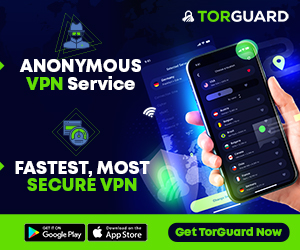Cybersecurity is a critical consideration in every workplace, no matter the industry or size of the company. It involves protecting internet-connected systems—including hardware, software, and data—from cyber threats. Employers and employees must understand the significant risks associated with poor cybersecurity practices. According to a report from Cybersecurity Ventures, the global cost of cybercrime is expected to reach $6 trillion annually. These statistics highlight the financial implications of cyber-attacks, emphasizing the need for comprehensive cybersecurity knowledge. Strengthening your understanding of cybersecurity best practices can help to prevent data breaches, identity theft, and the loss of critical business data—securing the future of your workplace.

Understanding of Cyber Threats
Every employee must understand the common forms of cyber threats – such as phishing, malware, ransomware, and social engineering attacks. Recognizing these threats can help in detecting and avoiding them. Phishing, for example, is a fraudulent attempt to obtain sensitive information such as login credentials or credit card numbers. Employees should be cautious of suspicious emails, links, and attachments that may lead to a phishing attack. Malware and ransomware, are malicious software designed to disrupt computer operations, steal data or extort money from victims. Logically, turning to cybersecurity training for employees would seem like a no-brainer. However, a recent survey by IBM found that only 56% of organizations provide such training. The same study also revealed that the average cost of a data breach is $3.86 million, which further emphasizes the need for employee education on cybersecurity.
Secure Password Practices
Employees should be educated on the importance of creating strong, unique passwords and regularly updating them. Avoid using personal information in passwords as they can be easily guessed by hackers. Instead, use a combination of upper and lower case letters, numbers, and special characters to create complex passwords that are difficult to crack. It is also essential to use different passwords for different accounts and systems. In the event of a security breach, using unique passwords will prevent hackers from gaining access to multiple accounts. Furthermore, employees should be aware of the dangers of sharing passwords with others, as this can compromise the security of sensitive information. Furthermore, employees should be reminded to never write down passwords or save them on their devices.
Recognize Suspicious Emails and Links
Employees should be trained to identify suspicious emails and links often used for phishing attacks. They should avoid clicking on unknown links or downloading attachments from unverified sources. If an email appears to be from a familiar sender but contains unusual language or requests sensitive information, it is likely a phishing attempt. Employees should also be cautious of emails that create a sense of urgency or ask for immediate action, as these are common tactics used in social engineering attacks by various malicious persons online. Phishing represents the majority of cyber-attacks, and employees must be vigilant in identifying and reporting suspicious emails to their IT department. Some of the best tell-tale signs of phishing attacks include poor grammar and spelling mistakes, requests for personal information, and urgent requests. For a lot of employees (who are unaware of the dangers of phishing), it only takes one wrong click to compromise sensitive information.
Secure Remote Work Practices
With the rise of remote work, cybersecurity practices must also adapt. Employees should be trained on secure remote work practices, including using a VPN for secure internet connections and not using public Wi-Fi networks when accessing sensitive information. All devices used for remote work should be regularly updated with the latest security patches and antivirus software. Employees should also be aware of the risks associated with using personal devices for work-related activities, such as accessing work emails or documents. Companies must also have clear policies in place for secure remote work practices to ensure all employees are following the necessary protocols. Especially when it comes to sensitive information and protecting company data.

Update and Backup Regularly
Keeping all systems, software, and applications updated with the latest security patches helps to secure them from known vulnerabilities. Regular data backups are also essential for data recovery in a breach. Employees should be educated on the importance of updating their devices and backing up critical data regularly. This practice can save organizations from significant losses in the event of a ransomware attack or other cyber-attack. In addition to regular backups, employees should also be aware of how to safely transfer and store sensitive data. Moreover, organizations should have robust data backup and disaster recovery plans in place to minimize the impact of a security breach. For instance, storing data on secure cloud servers can provide an extra layer of protection against cyber threats.
Use Secure and Trusted Networks
When accessing work-related data, only use secure networks. Avoid public Wi-Fi for handling sensitive information. These networks are often unsecured and can be easily accessed by cybercriminals. Employees should also avoid using personal devices for work-related tasks, as they may not have the same level of security as company-issued devices. If remote work is necessary, organizations should provide employees with secure virtual private network (VPN) access to ensure the safe transfer of data. For added security, employees should also be educated on the risks of using unsecured USB drives or external hard drives for storing and transferring data. Most importantly, employees should be aware of the potential consequences and liabilities associated with accessing work-related data on unsecured networks.
Report Incidents
If a potential security incident occurs, employees should know the procedure for reporting it to their IT department or security team. Prompt reporting can prevent or limit damage. Employees should also be familiar with the organization’s incident response plan and understand their role in case of a breach. This can involve changing passwords, disconnecting from the network, or assisting in identifying the source of the incident. Encouraging employees to speak up about potential security threats can help organizations identify and address vulnerabilities before they are exploited. In many cases, employees are the first line of defense against cyber-attacks and play a crucial role in maintaining the overall security of their workplace. Even with the most robust security systems in place, a well-informed and trained workforce can be the difference between preventing an attack or suffering significant losses.
Employers must provide comprehensive training to their employees on best practices for keeping sensitive information secure. Employees, in turn, must take an active role in implementing these practices and reporting any potential incidents. By working together, organizations can create a strong defense against cyber threats and protect the future of their workplace. So remember, every employee should know the basics of cybersecurity to keep themselves and their workplace safe. Organizations should also regularly review and update their cybersecurity policies and procedures to ensure they are keeping up with evolving threats.






1 Comment